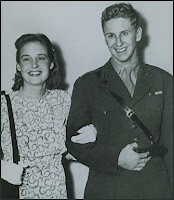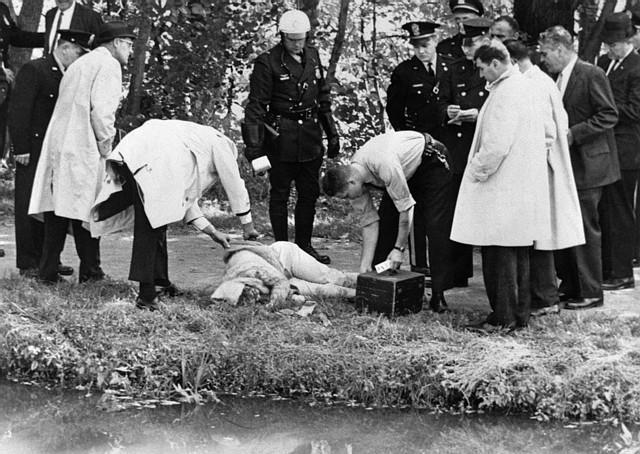To Kill a Mockingbird

(Mary Pinchon Meyer on assignment for Mademoiselle Magazine).
I made it to morning, and if the Lord has risen once more I cannot testify by personal vision, though I can say that it certainly seems reasonable. Life is singing with the sound of the birds outside.
For those who expressed concern yesterday, I did the right thing and stayed off the knee. It was a battle between cabin fever and good sense, and I took the enforced down-time to read Mary’s Mosaic, a most curious account of the murder DC socialite and JFK lover Mary Pinchot Meyer by Peter Janney, the son of an aristocrat of the old CIA- you know, the Princeton kind that were in shorter supply when I knew the good folks at Langley.
It is a well-written book, but like all the stuff about the Kennedy era, it comes with a whiff of hallucinogen. Timmy Leary appeals in the story, too, so you know it is weird.
“Woman Dies In Robbery On Towpath” is how the Washington Post covered Mary Pinchon Meyer’s death. But it was already weird. The police had made no identification of the body- that was supposedly provided by then-Newsweek Washington correspondent Ben Bradlee, Mary’s brother-in-law. But people in town already knew. Although he did not testify to that then, Bradlee talked about a mysterious phone call- possibly from Counterintelligence Chief James Jesus Angleton- while the DC cops were just arresting the man they would try for the murder- Ray Crump, a day laborer from Anacostia, way out of his neighborhood in Georgetown.
Mary was, in the words of family friend and investigator (and maybe the son of one of the people responsible for her death- his opinion, not mine,) Peter Janney:
“Mary was a free spirited blonde in her early forties, she was the product of the eccentric, blue-blooded Pinchot family. After divorcing the brainy, intense CIA propaganda master Cord Meyer, she had refashioned herself as a Georgetown bohemian, setting herself up as a painter in a studio behind Ben Bradlee’s N Street house.”
Cord Meyer was a complex man: a wounded-in-action-Marine, one-time pacifist and director of CIA’s media influence operations.
Mary was a progressive all her life. Cord came to political activism after he got back to CONUS and recuperated from his wounds. Mary came to her views through Vassar by way of her conservationist family, whose patriarch was a two-time governor of Pennsylvania. Cord came to it as a wounded Marine hero from the battle on Guam. He lost an eye, and was horrified of the implications of the use of the Bomb.
Both knew Jack Kennedy. Mary had first danced with him as a teen and JFK was a Choate preppie, and then they were all at the Alger Hiss-chaired San Francisco UN Conference.
It is amazing to see all the Cold War names in one small place: JFK and Jackie, Frank Wisner, Richard Bissel, Joseph and Stewart Alsop, Philip and Katherine Graham, Clark Clifford, Walt Rostow, James Jesus and Cicely Angleton, Wistar Janney, Ben and Antoinette Bradlee all appear in the streets of Georgetown, at the cocktail parties and soirees off M Street and up the hill.
It was a different world then: painfully small.
There was a lot of strange stuff going on. Frank Wisner, an original OSS Veteran, was establishing Operation Mockingbird, which may or may not have been the real name for the Langley operation that intended to suborn journalists in the name of national security.
In my day we called a similar still-born effort in the days after 9/11 “Strategic Influence Operations” before the term went quickly out of vogue when it appeared in the papers. That was as close to being named in the Washington Post as I am likely to come, and was lucky to escape unscathed.
After the story broke in 2002 about the existence of the office, Don Rumsfeld had to shut it down, muy pronto, while denying the whole thing had ever existed as anything but a concept. There were apparently memories longer than ours in town.
I was interested to learn that some of the people with the most liberal anti-conservative credentials- like Ben Bradlee of the Washington Post- had been up to their necks in “Mockingbird.” It was all very curious.
I don’t know if it is all true or not. I am not particularly surprised if it is, and a variety of blue ribbon commissions and panels down through the years have issued so many astonishing things that the Agency was up to that it is convenient to just chalk anything up to their clandestine operations.
I don’t know, have no way of knowing, and frankly don’t want to know. But there is something that lingers from the seminal Bad Day in Dallas in 1963 that I have had a hard time getting past all of my life.

(Mary and Cord in happier Days.)
I was trying to tell some vignettes of the Red Spies of the 1930s and 40s. Cord and Mary were very much one-worlders at the dawn of peace. Cord was working on a construct for global government before Alan Dulles asked him to come to the newly-formed CIA (or had be been spying against them?)
As far as progressive credentials go, there can be no more virtuous position than being smeared by Tailgunner Joe McCarthy, and Meyer became one of the Senator’s targets for his previous leftist sentiments (if true) even as he ran Operation Mockingbird with a slush-fund of astonishing dimensions.
He kept his clearance despite a row with J. Edgar Hoover, but he lost his wife Mary along the way as he drifted deeper into the orbit of the senior CIA. Mary was a free spirit, a hippy before hippies were fashionable, and the claim is that after she and Cord were done, she smoked marijuana and possibly dropped acid with the President of the United States.
That is the claim, anyway. You cannot say that Camelot doesn’t still have its share of wonders.
According to the two books I am reading about Mary Pinchon (Nina Burleigh’s “A Very Private Woman,” and Peter Janney’s hallucinogenic “Mary’s Mosaic”) Mary’s murder is either deeply entwined with the JFK assassination with a professional hit because she knew too much (Janney) or the work of a deranged man and had nothing to do with anything except bad luck and timing (Burleigh).
I am going to limit my speculation to identifying precisely where the murder was committed. I must have walked there dozens of times. That should be something knowable here in Washington, like the precise place on the sidewalk where Pinochet’s thugs gunned down former Chilean Ambassador Orlando Letelier in Sheridan Circle, or the box at Ford’s Theater where Booth got Mr. Lincoln.
The C&O Canal towpath is a peaceful place this morning, just as it must have been right before Mary Pinchon Meyer took her last walk l toward Fletcher’s Boat House on the Potomac. I may take my cane and try to hobble down that way this afternoon.
It is a nice day.

(Mary’s murder scene, 1964, with cops. Photo Washington Post)
Copyright 2012 Vic Socotra
www.vicsocotra.com
